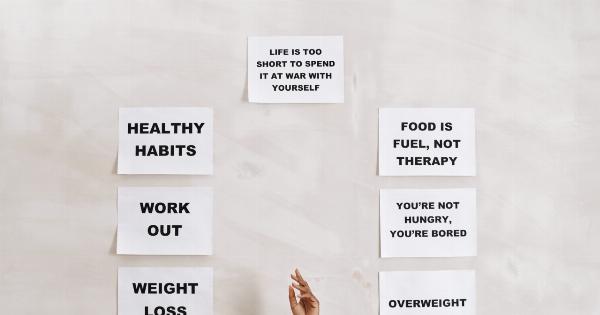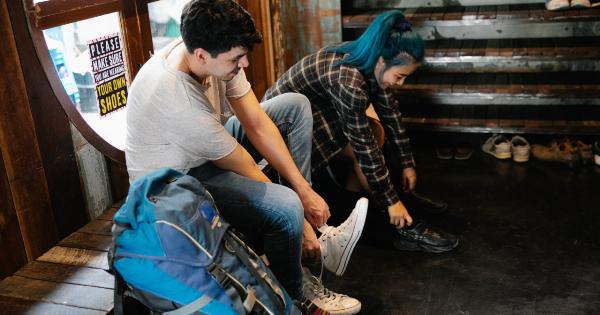In our everyday lives, we often overlook the various dangers and hazards that surround us. From the air we breathe to the activities we engage in, there are numerous risks that we may not be aware of.
It is crucial to understand these hazards and take necessary precautions to ensure our safety. This article highlights the dangers of breathing and other potential threats in life.
Air Pollution: A Silent Danger
In recent years, air pollution has emerged as a significant concern for public health. The air we breathe is increasingly contaminated with harmful pollutants, such as carbon monoxide, nitrogen dioxide, and particulate matter.
These pollutants can have adverse effects on our respiratory system, leading to respiratory illnesses such as asthma, bronchitis, and even lung cancer. Continuous exposure to polluted air can significantly compromise our overall well-being.
Indoor Air Quality: A Hidden Menace
While outdoor air pollution garners much attention, the quality of the air indoors can also pose significant risks.
Various factors contribute to poor indoor air quality, including inadequate ventilation, mold growth, and the presence of volatile organic compounds (VOCs) from household products. Prolonged exposure to these indoor pollutants can lead to respiratory problems, allergies, and other health issues.
Unhealthy Lifestyle Choices
Our daily lifestyle choices can also expose us to hazards. Smoking, for instance, is a well-known risk factor for lung cancer and other respiratory diseases.
The chemicals found in tobacco smoke are not only harmful to smokers but also pose a threat to people exposed to secondhand smoke. Additionally, a sedentary lifestyle, poor diet, and excessive alcohol consumption can contribute to various health problems, including heart disease, diabetes, and obesity.
Dangers in the Workplace
Many occupations expose workers to potential hazards that can impact their health and well-being. Industries such as construction, mining, and manufacturing often involve exposure to dangerous substances, loud noises, and physical risks.
Without proper safety measures and protective gear, workers can suffer from injuries, respiratory conditions, hearing loss, and other occupational diseases. Employers need to prioritize employee safety and provide a safe working environment.
Physical Injuries and Accidents
Life can sometimes throw unexpected challenges our way. Accidents happen, and they can result in severe injuries or even loss of life.
Whether it’s road accidents, falls, burns, or other unfortunate events, physical injuries can have long-lasting consequences. Taking necessary precautions and being mindful of our surroundings can help mitigate these risks, but it is impossible to completely eliminate the possibility of accidents.
Environmental Hazards
Our environment is filled with hazards that can pose dangers to human health. Natural disasters such as earthquakes, floods, hurricanes, and wildfires can cause massive devastation and put lives at risk.
Additionally, exposure to toxic substances in the environment, such as lead or asbestos, can have severe health implications. It is essential to stay updated on environmental risks and be prepared to address them.
Mental Health Challenges
While physical hazards often take the spotlight, mental health challenges are equally significant. Stress, anxiety, depression, and other mental health conditions can have a profound impact on our overall well-being.
The pressures of work, relationships, and societal expectations can contribute to mental health issues. It is important to seek help and support when needed and prioritize self-care to maintain good mental health.
Technology-Related Hazards
The advancement of technology has undeniably improved our lives, but it has also brought its own set of risks.
Overdependence on technology devices, such as smartphones and computers, can lead to various health problems, including eye strain, musculoskeletal disorders, and sleep disturbances. Moreover, cybersecurity threats and the risk of personal data breaches highlight the need for vigilance while navigating the digital world.
Unsafe Practices at Home
Our homes, meant to be places of comfort and safety, can harbor unsuspected hazards. Improper handling of electrical appliances, mishandling of flammable materials, and lack of caution in the kitchen can result in accidents, injuries, and even fires.
It is crucial to practice safety protocols at home, such as installing smoke detectors, keeping flammable items away from heat sources, and being mindful of potential risks.
Natural and Synthetic Disasters
Natural disasters like earthquakes, floods, hurricanes, and tsunamis can cause widespread damage and threaten lives. Similarly, human-made disasters such as explosions, chemical spills, or nuclear accidents can have catastrophic consequences.
Being prepared for these emergencies by following evacuation plans, creating emergency kits, and staying updated on safety protocols can save lives and minimize injuries.
Conclusion
Life is full of hazards and risks that we need to navigate carefully. From air pollution to workplace dangers, we must be aware of these potential threats and take preventive measures where possible.
By prioritizing our health and safety, staying informed, and practicing caution, we can reduce the likelihood of falling victim to these hazards and live healthier, safer lives.


























